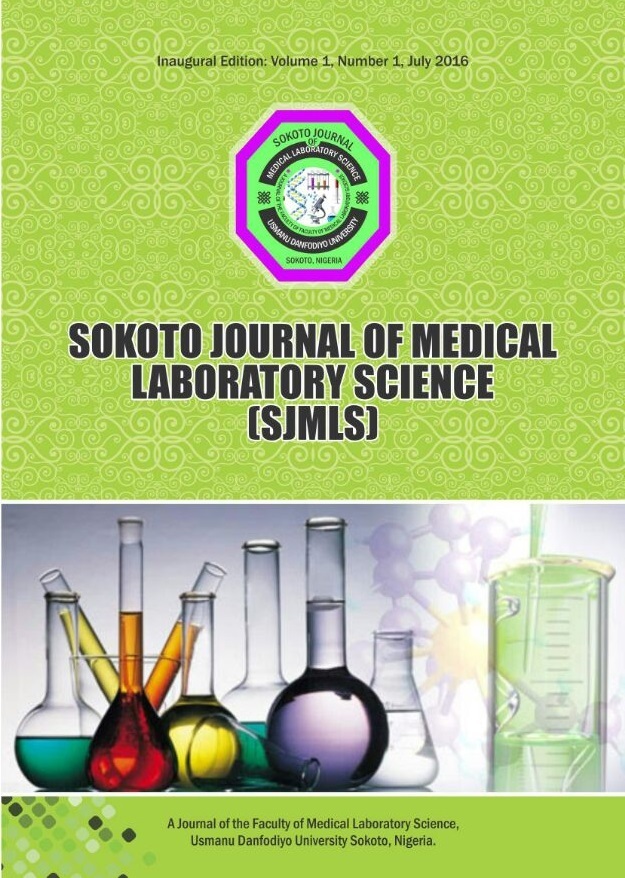Proximate Analysis, Phytochemical Screening and Antimicrobial Evaluation of the Kernel and Oil Extract of Moringa oleifera
DOI:
https://doi.org/10.4314/sokjmls.v9i2.1Keywords:
Zone of inhibition, Agar well diffusion, minimum inhibitory concentration, phytochemical, antimicrobialAbstract
The aim of this study is to ascertain the phytochemical constituents, antimicrobial activity, and proximate analysis of the seed kernels of Moringa oleifera. The organisms tested for antimicrobial susceptibility were Salmonella typhi, Pseudomonas aeruginosa, Escherichia coli, and Shigella flexneri, as well as the fungi Aspergillus niger and Candida albicans. Moringa oleifera seeds were gathered, dried in the air, shelled and ground into powder. The water content and ash value of the kernels were ascertained and were steeped in sterile water, then extracted. The seed oil was extracted using petroleum ether and a Soxhlet device. A standard analytical approach was utilized for phytochemical screening in order to assess secondary metabolites, and the agar well diffusion method was employed for antimicrobial evaluation. The mean ash value and moisture content of the seed were 50.3 ± 0.01 and 23.47 ± 0.06%, respectively. The aqueous kernel extracts contained solely alkaloids, as identified by phytochemical screening of secondary metabolites. Conversely, the plant's oil extract did not contain any secondary metabolites. When testing the aqueous kernel extract against P. aeruginosa, the greatest zone of inhibition measured at 200 mg/ml was 19.7 mm. At 100, 50, 25, 12.5, and 6.25 mg/ml, the zones of inhibition measured were 16.3, 15.7, 11.3, 8.0 and 7.3 mm respectively. The outcome reveals that the kernel's aqueous extract had minimum inhibitory concentration (MIC) for E. coli and P. aeruginosa of 200 mg/ml and 6.25 mg/ml respectively. Based on the study's findings, it can be said that the whole kernel extract of Moringa oleifera has antibacterial capability and P. aeruginosa was most susceptible when compared with other species.





